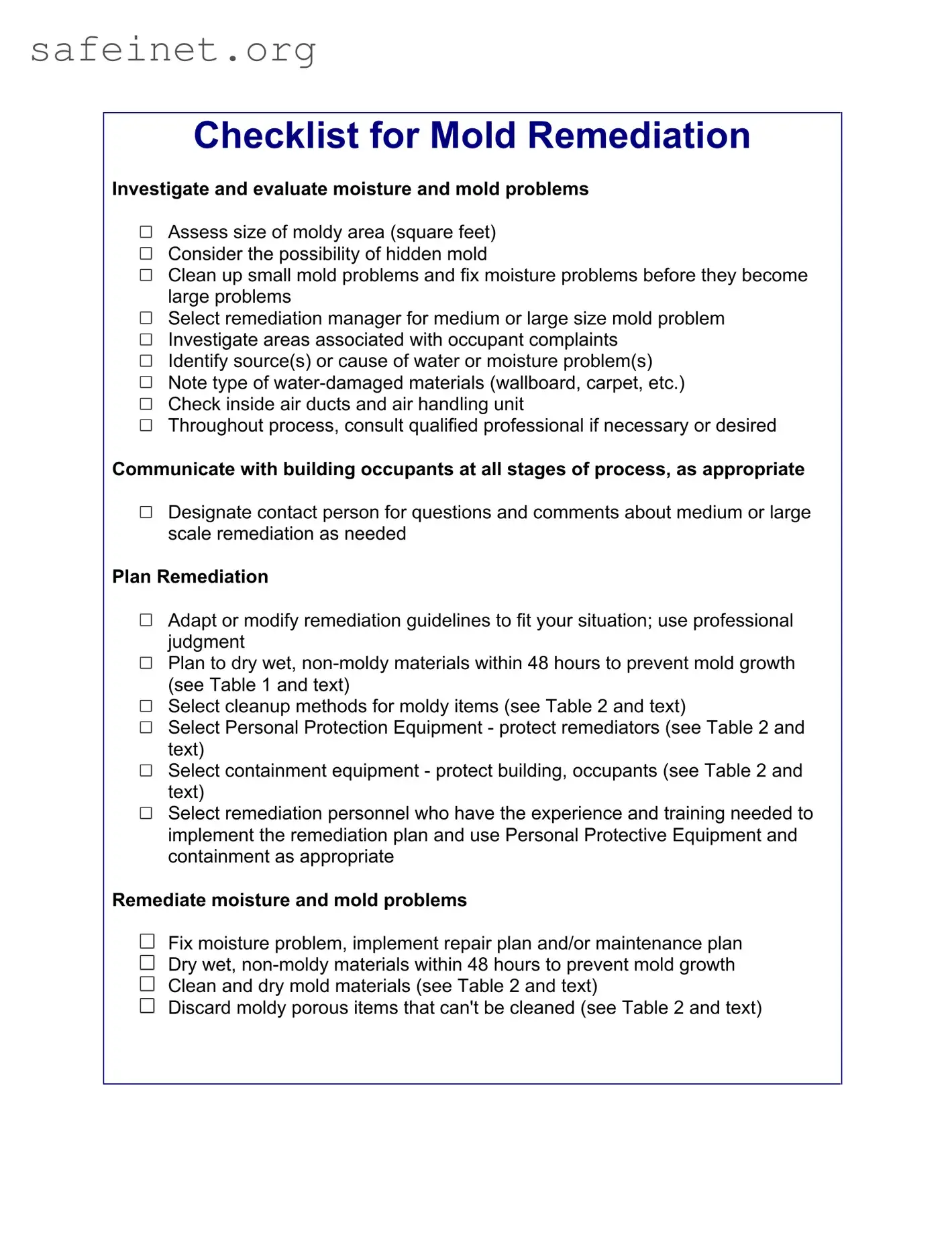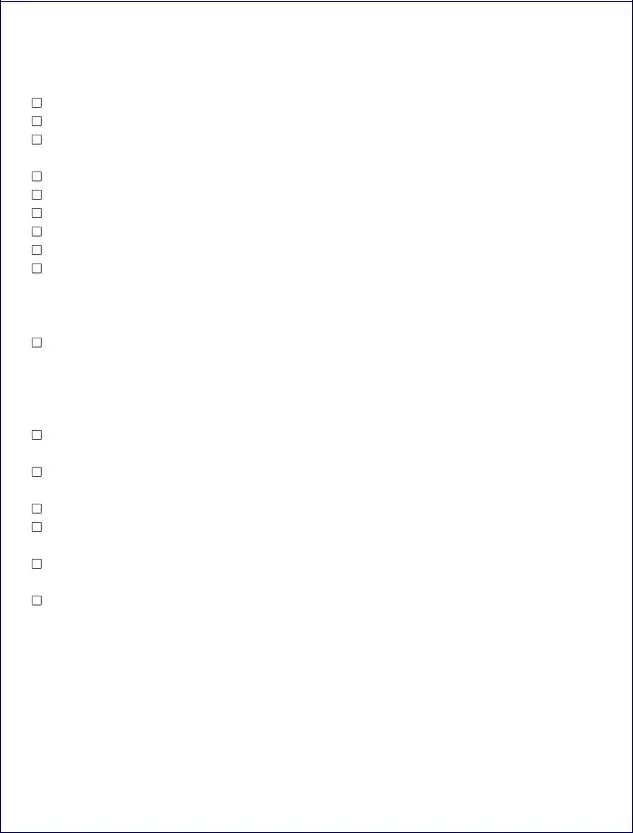What is the purpose of the Checklist Mold form?
The Checklist Mold form serves as a guide for assessing and managing mold remediation processes. It helps identify moisture issues, evaluate the size of moldy areas, and establish a plan tailored to the specific needs of a building or environment. Using this checklist can facilitate effective communication among stakeholders and ensure that necessary steps are taken to mitigate mold problems efficiently.
What should I do if I discover mold in my building?
If you discover mold, first investigate the extent of the problem. Assess the size of the affected area and the materials damaged by moisture. If the mold growth is small, follow the cleanup guidelines for minor issues. For larger issues, consult with a qualified professional to develop a remediation plan, as it may require specialized equipment and techniques to ensure safety and effectiveness.
How can I prevent mold growth in the future?
To prevent mold growth, address moisture issues promptly. Dry any wet, non-moldy materials within 48 hours to prevent mold development. Regularly inspect areas prone to moisture, such as basements and attics, ensuring that your building's ventilation systems are functioning effectively. Develop a maintenance plan to address water issues before they escalate into larger problems.
What personal protective equipment (PPE) should be used during remediation?
Appropriate personal protective equipment should include gloves, goggles, and respirators. The specific PPE required can depend on the size and nature of the mold issue. Always refer to the Cleanup Methods section in the checklist for detailed recommendations on selecting the right PPE for the situation.
How do I assess whether the mold problem is too large for a DIY solution?
Consider the following questions: Is the moldy area larger than 10 square feet? Have building materials been wet for over 48 hours? Are there health complaints from occupants? If the answer is yes to any of these questions, it might be time to consult professionals. Large and complex mold issues typically require skilled remediation specialists to ensure safety and compliance with regulations.
What should I do with contaminated materials that cannot be cleaned?
Materials that are porous and cannot be effectively cleaned should be discarded. This may include items like carpets, drywall, or furniture that have been severely affected by mold. Follow the recommendations in the Cleanup Methods section of the checklist to ensure proper disposal and minimize exposure risks during this process.
What role does communication play during the mold remediation process?
Effective communication is crucial throughout the remediation process. Building occupants should be informed about the steps being taken, potential disruptions, and safety measures. Designating a contact person for questions and comments can facilitate this process and help address tenant concerns promptly.
Are there specific areas to investigate if occupants report mold issues?
Yes, focus on areas linked to occupant complaints, such as places where moisture might accumulate. Conduct inspections in areas like bathrooms, kitchens, and locations near leaks or water damage. It’s also essential to check air ducts and HVAC systems, as they can harbor mold and distribute spores throughout the building.
When should I consider consulting with medical professionals about mold exposure?
If building occupants are experiencing health issues that may be linked to mold exposure—such as respiratory problems, allergic reactions, or persistent odors—it’s advisable to seek advice from medical professionals. They can provide guidance on health risks and necessary actions, ensuring the safety and well-being of everyone involved.


 Fix moisture problem, implement repair plan and/or maintenance plan
Fix moisture problem, implement repair plan and/or maintenance plan Dry wet,
Dry wet,  Clean and dry mold materials (see Table 2 and text)
Clean and dry mold materials (see Table 2 and text) Discard moldy porous items that can't be cleaned (see Table 2 and text)
Discard moldy porous items that can't be cleaned (see Table 2 and text)